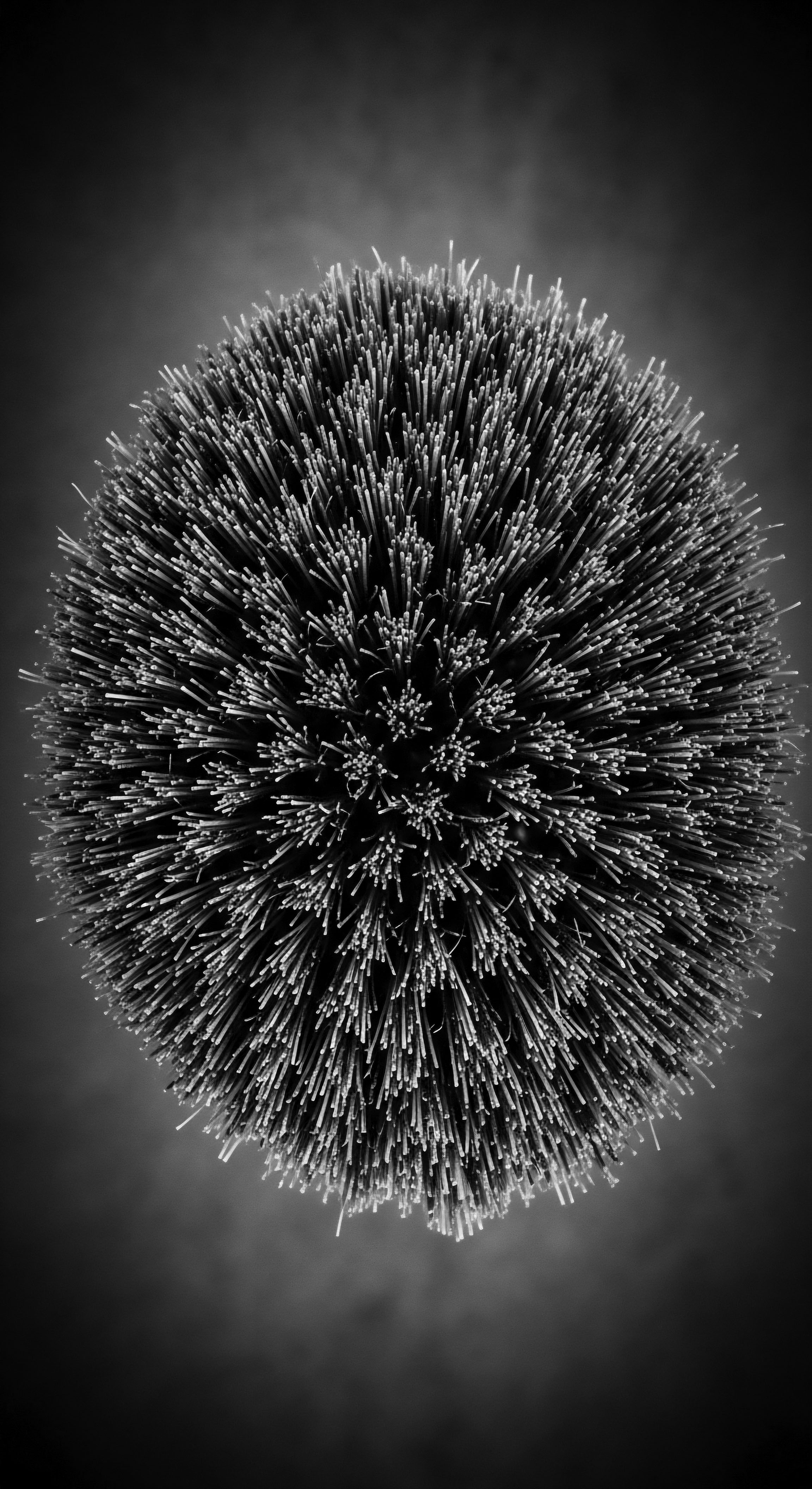
Fundamentals
The Hair Fiber Health, at its most straightforward, describes the optimal physiological state of individual hair strands. It speaks to the integrity of each filament, from its cuticle, the outermost protective layer, to its cortex, the core responsible for strength and elasticity, and even to its innermost medulla. When hair possesses robust health, it exhibits a natural luster, a pliable strength, and a resilience against the environmental stressors and mechanical manipulations encountered daily. This physical well-being of the hair fiber is not merely a superficial concern; it underpins the very possibility of hair’s ability to retain moisture, resist breakage, and maintain its inherent structural characteristics.
For individuals with textured hair, particularly those within Black and mixed-race communities, this fundamental understanding of Hair Fiber Health carries a weight of historical and cultural significance that extends beyond basic biology. The inherent curl patterns, from gentle waves to tight coils and intricate kinks, possess a unique architecture that demands a specific kind of understanding and care to maintain their integrity. The health of these fibers is intrinsically linked to their ability to express their natural form, a form that has often been subjected to societal pressures and misinterpretations.
Hair Fiber Health is the cornerstone of vibrant, resilient hair, especially for textured strands whose unique structure demands a nuanced understanding.
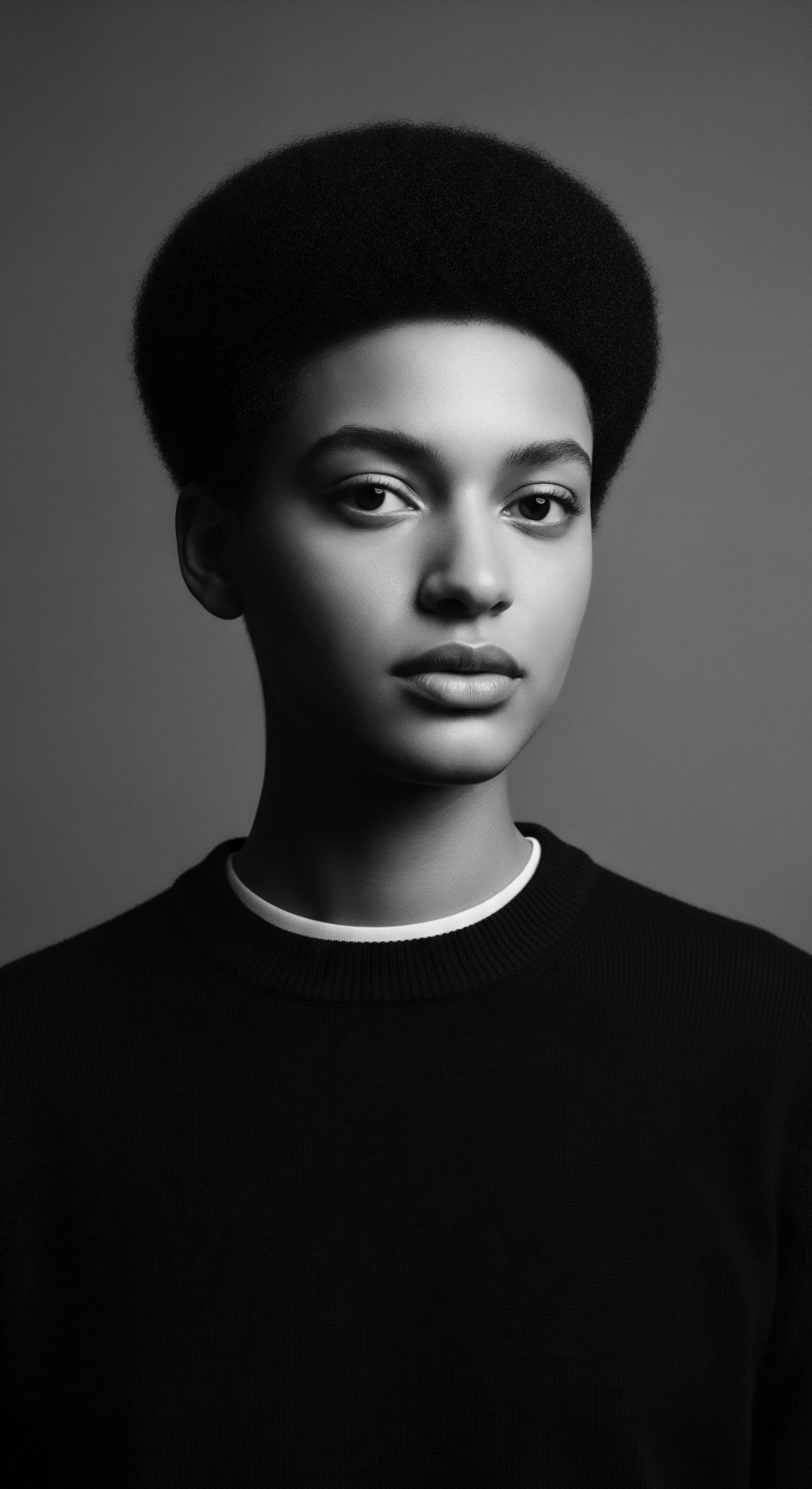
The Structure of a Strand ❉ A Heritage Lens
Each hair strand, regardless of its texture, is a marvel of biological engineering. It is composed primarily of keratin, a fibrous protein. The outermost layer, the Cuticle, resembles overlapping scales, serving as a shield against external aggressors and regulating moisture content.
Beneath this lies the Cortex, a bundle of keratin fibers that provide the hair’s tensile strength and elasticity. The innermost region, the Medulla, is not always present in all hair types and its exact function remains an area of ongoing study.
For textured hair, the journey of the hair fiber from its follicular origin is particularly distinctive. The elliptical shape of the follicle, rather than a perfectly round one, influences the helical growth pattern of the strand. This spiraling trajectory means that the cuticle layers on textured hair often do not lie as flat as on straight hair, creating more opportunities for moisture to escape and making the hair more prone to dryness. This inherent characteristic has long informed ancestral practices, which intuitively centered on moisture retention and protective styling.
Understanding these elemental components of Hair Fiber Health is not just about scientific knowledge; it is about recognizing the inherent qualities of textured hair that ancestral communities have honored for generations. Their practices, developed over centuries, were a testament to their deep observation and intuitive grasp of what these unique fibers needed to flourish.
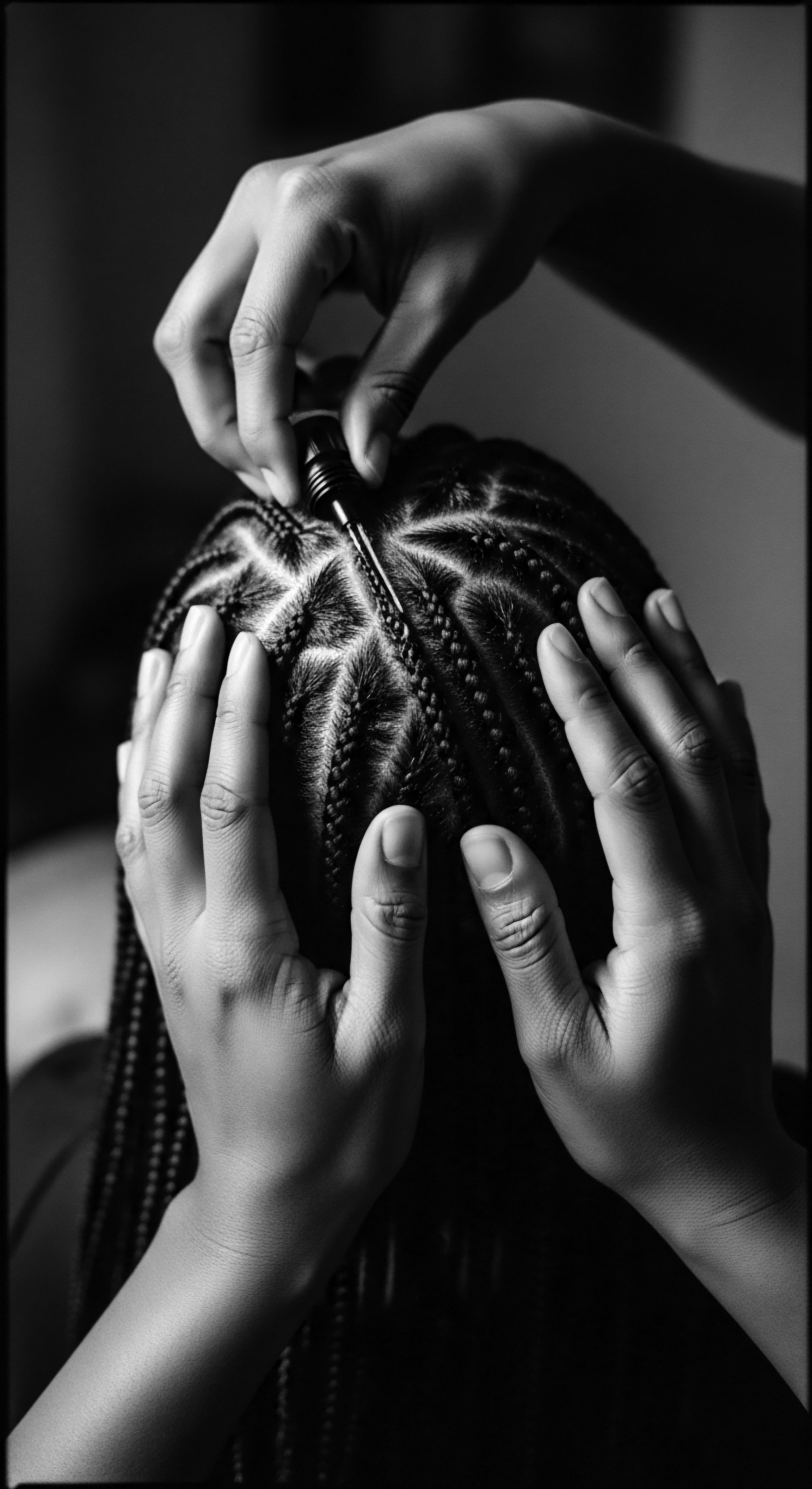
Ancestral Wisdom in Fiber Preservation
Long before the advent of modern microscopy, communities across West and West Central Africa, such as the Yoruba, Wolof, and Mende, cultivated a profound understanding of hair care that implicitly prioritized Hair Fiber Health. Their rituals, often communal and steeped in spiritual meaning, focused on nurturing the hair from root to tip. The preparation of botanical extracts and natural oils was not merely for cosmetic appeal but for their deeply restorative properties, which strengthened the hair fiber against environmental challenges.
- Shea Butter ❉ Derived from the nuts of the shea tree, this staple in West African traditions was used for centuries to moisturize hair and protect it from harsh environmental conditions, adding shine and facilitating braiding.
- African Black Soap ❉ Crafted from plantain skin ash, cocoa pods, and nourishing oils, this traditional cleanser offered a chemical-free alternative, deeply cleansing the scalp and hair without stripping natural oils entirely.
- Chebe Powder ❉ Hailing from the Bassara/Baggara Arab tribe in Chad, this powder, made from ground seeds, was traditionally mixed with water or moisturizing substances like shea butter to aid length retention by filling hair shaft spaces and sealing the cuticle.
These traditional applications, often passed from mother to daughter, demonstrate an ancient recognition of the Hair Fiber Health’s significance. They represent a heritage of care, where the wisdom of the earth was applied with reverence to maintain the integrity and vitality of textured strands.
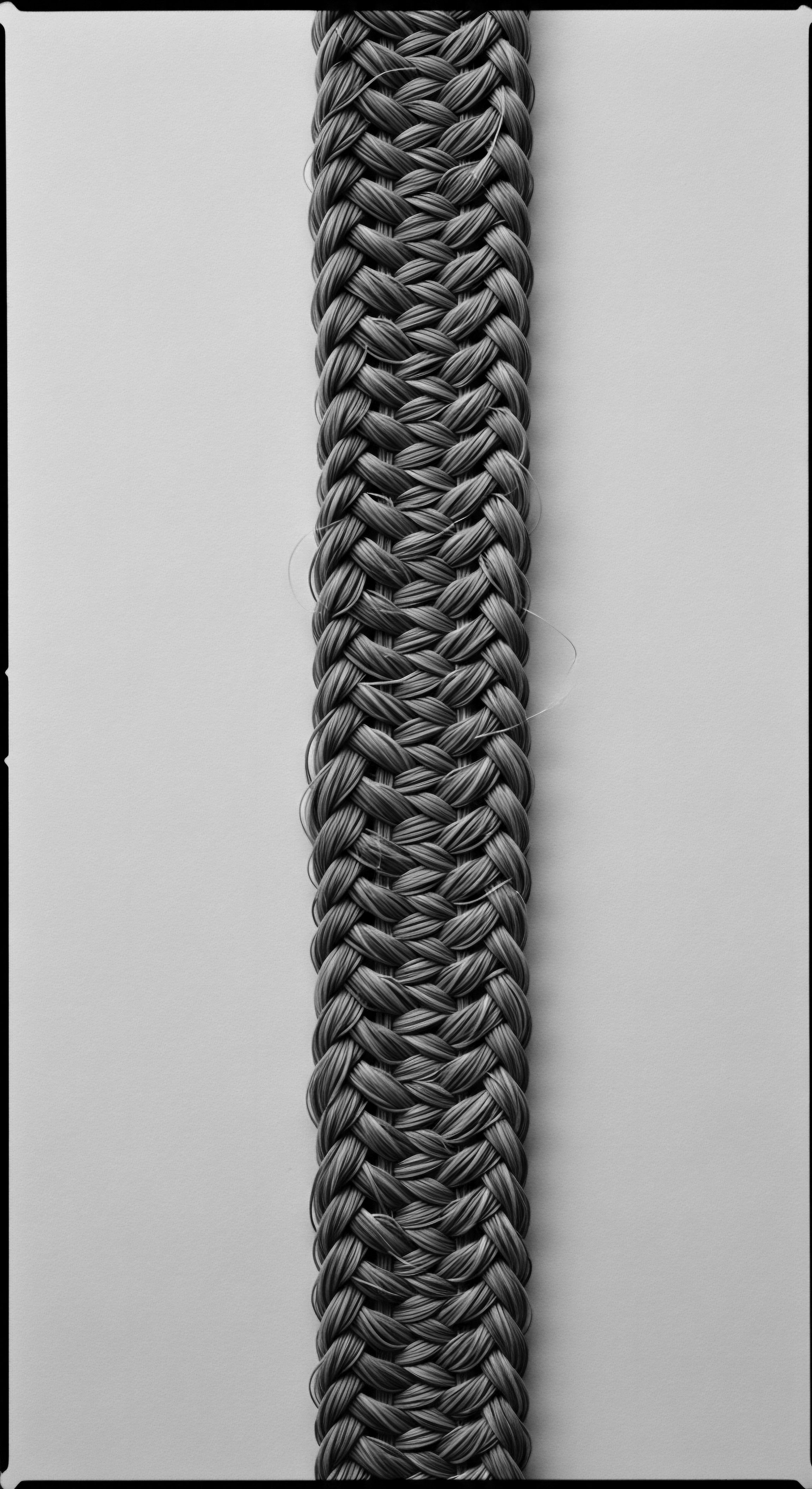
Intermediate
Moving beyond the foundational biological delineation, the intermediate understanding of Hair Fiber Health encompasses its dynamic interplay with environmental factors, styling practices, and the profound impact of cultural perceptions, especially for textured hair. This level of comprehension acknowledges that the hair fiber is not a static entity but a living expression, constantly responding to its surroundings and the hands that tend to it. The meaning of Hair Fiber Health, in this context, expands to include the resilience of the hair shaft against damage, its capacity for moisture retention, and its structural integrity under various conditions.
For Black and mixed-race hair, this deeper exploration of Hair Fiber Health reveals the historical struggle and enduring strength embedded within each coil and curl. The inherent characteristics of textured hair, while biologically protective in their ancestral climates, became points of vulnerability under the gaze of Eurocentric beauty standards. The very structure that allowed for cooling air circulation and UV protection in African climates was often deemed “unruly” or “unprofessional” in new environments.
The journey of Hair Fiber Health for textured hair is a testament to resilience, a continuous dialogue between ancestral wisdom and modern understanding.
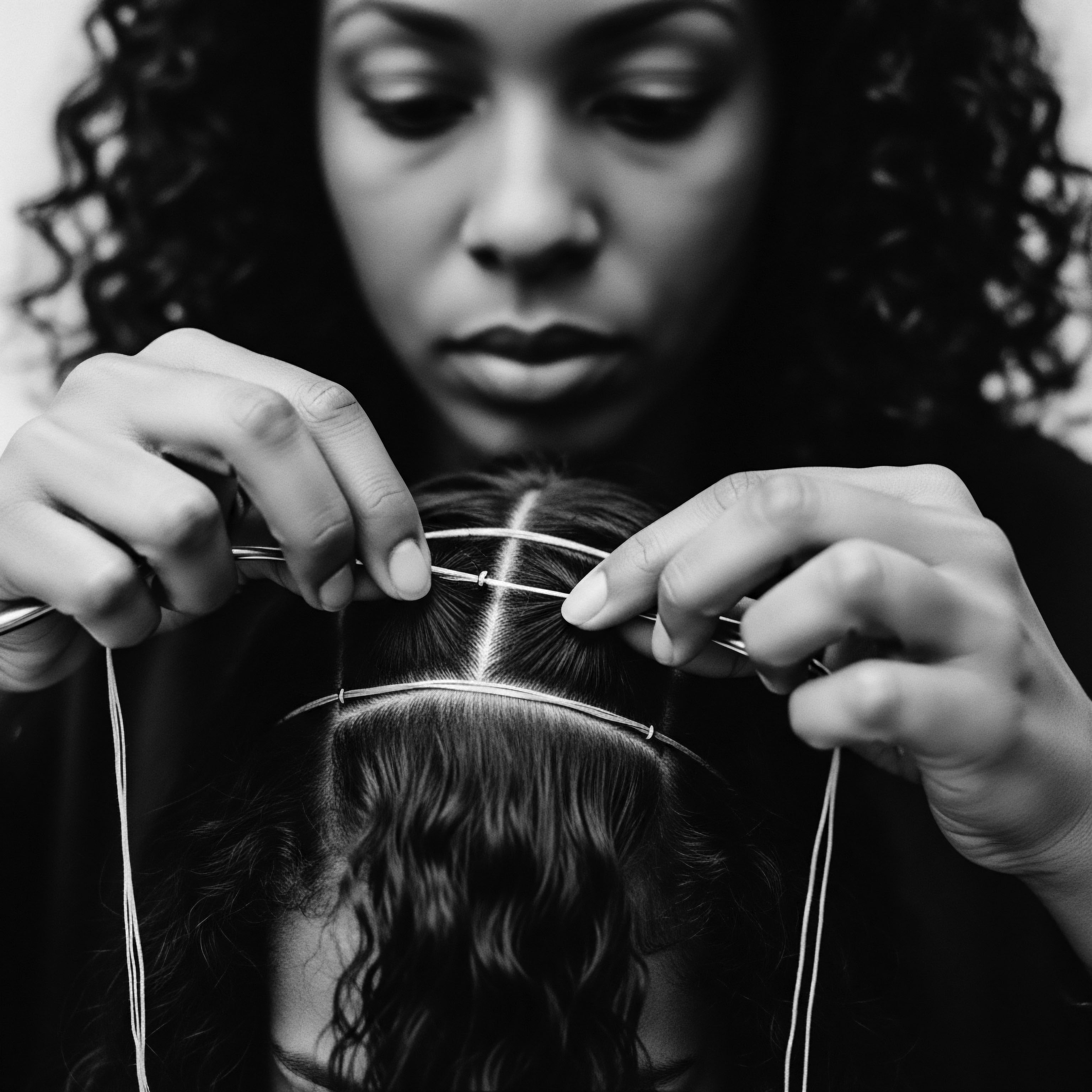
The Legacy of Adaptation and Resistance
The transatlantic slave trade marked a brutal disruption of ancestral hair care traditions. Enslaved Africans were forcibly stripped of their cultural practices, including their intricate hairstyles, often having their heads shaved as an act of dehumanization and to erase their identity. This profound severance from heritage meant a loss of traditional tools, oils, and the communal rituals that maintained Hair Fiber Health. Hair became matted, tangled, and often hidden, a stark contrast to its revered status in pre-colonial societies where it signified status, identity, and even spiritual power.
In the face of such systemic oppression, the understanding of Hair Fiber Health shifted. Survival became paramount, and hair care, though often rudimentary, became an act of quiet defiance. Later, the quest for assimilation led many to adopt chemical straighteners and pressing combs, altering the natural texture to conform to prevailing beauty norms. This period, while seemingly a departure from natural Hair Fiber Health, was a complex response to societal pressures, driven by the desire for acceptance and economic mobility.
The Civil Rights Movement of the 1960s ushered in a powerful re-evaluation of Black hair. Natural, textured hair became a potent symbol of resistance, self-acceptance, and pride, challenging the Eurocentric beauty standards that had long dominated. This period saw a renewed focus on nurturing the inherent Hair Fiber Health of coils and kinks, not by altering them, but by celebrating their natural form. The concept of Hair Fiber Health thus became intertwined with identity, autonomy, and cultural reclamation.

Environmental Impact and Protective Practices
The unique helical structure of textured hair means its cuticle layers are naturally more open, leading to a greater propensity for moisture loss compared to straight hair. This characteristic necessitates specific care strategies to maintain Hair Fiber Health, especially in diverse climates. The historical context reveals how communities adapted their practices to environmental demands.
Consider the dry, arid conditions of certain regions in Africa. Traditional practices involving the generous application of plant-based oils and butters, such as Argan Oil from Morocco or Baobab Oil from various African regions, were not merely cosmetic. They served as vital emollients, sealing the hair cuticle to prevent dehydration and maintaining the hair fiber’s flexibility. This ancestral wisdom, focused on environmental protection, directly contributed to the long-term Hair Fiber Health.
Today, the meaning of Hair Fiber Health for textured hair continues to emphasize protective styling and moisture retention. Styles like braids, twists, and locs, which have deep historical roots, shield the delicate hair ends from environmental damage and reduce mechanical stress, allowing the hair fiber to retain its length and strength.
| Traditional Practice (Heritage Root) Oiling with Shea Butter (West Africa) |
| Underlying Principle for Hair Fiber Health Moisture retention, protection from elements, adding suppleness. |
| Modern Scientific Interpretation Occlusive properties of fatty acids create a barrier, reducing transepidermal water loss and strengthening the lipid layer of the cuticle. |
| Traditional Practice (Heritage Root) Hair Threading / Irun Kiko (Yoruba, Nigeria) |
| Underlying Principle for Hair Fiber Health Protective styling, length retention, minimizing manipulation. |
| Modern Scientific Interpretation Reduces mechanical stress and friction on the hair shaft, preventing breakage and preserving cuticle integrity. |
| Traditional Practice (Heritage Root) Use of African Black Soap (West Africa) |
| Underlying Principle for Hair Fiber Health Deep cleansing without harsh stripping, scalp health. |
| Modern Scientific Interpretation Saponified oils gently remove buildup, while unsaponified components offer conditioning; plant compounds may support scalp microbiome balance. |
| Traditional Practice (Heritage Root) Herbal Rinses / Masks (Various African cultures) |
| Underlying Principle for Hair Fiber Health Scalp stimulation, strengthening hair, addressing specific concerns. |
| Modern Scientific Interpretation Bioactive compounds from plants (e.g. polyphenols, antioxidants) provide anti-inflammatory, antimicrobial, and nourishing effects to the follicle and fiber. |
| Traditional Practice (Heritage Root) These enduring practices highlight a continuous lineage of care, demonstrating how ancient knowledge intuitively safeguarded Hair Fiber Health, a wisdom now affirmed by contemporary scientific understanding. |
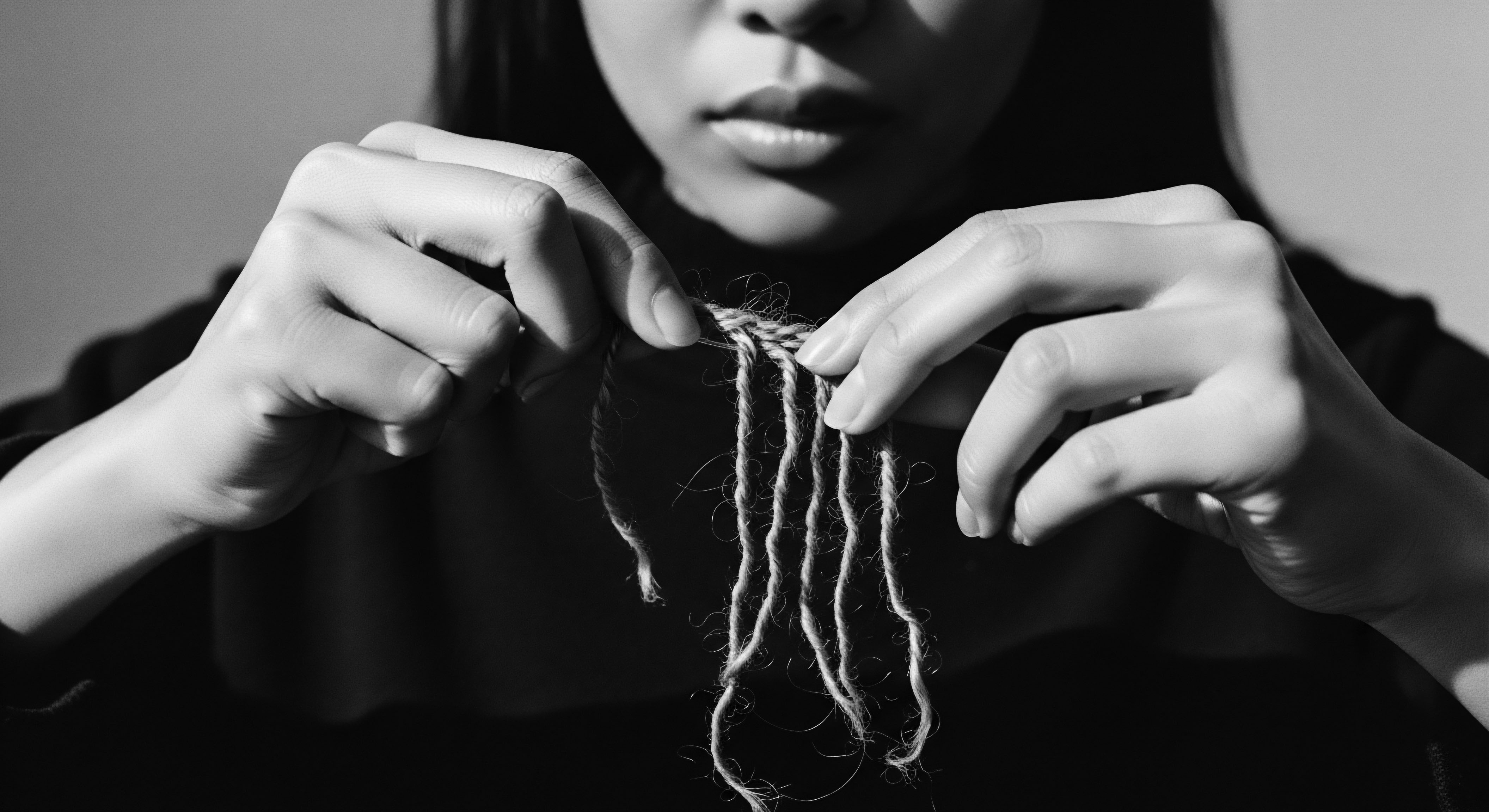
Academic
The academic delineation of Hair Fiber Health transcends a mere descriptive overview, venturing into a rigorous examination of its biochemical composition, biomechanical properties, and the profound socio-historical forces that have shaped its interpretation and care, particularly within the context of textured hair. This scholarly perspective acknowledges Hair Fiber Health as a complex biological system intricately linked to human identity, cultural expression, and the enduring legacy of ancestral practices. The meaning of Hair Fiber Health, at this advanced level, encompasses the quantitative and qualitative metrics of fiber integrity, its resilience under various stressors, and the systemic implications of its well-being for holistic health.
For individuals of African descent, the discourse surrounding Hair Fiber Health is inseparable from centuries of cultural imposition and reclamation. The unique helical morphology of afro-textured hair, characterized by its elliptical cross-section and numerous twists and turns along the shaft, inherently predisposes it to certain biomechanical vulnerabilities, such as increased susceptibility to knotting and breakage due to reduced inter-fiber friction and greater surface area exposure. However, this biological reality was historically weaponized, contributing to derogatory classifications of Black hair as “nappy” or “wooly,” terms rooted in the Atlantic slave trade. The academic lens demands a deconstruction of these historical narratives, revealing how Hair Fiber Health became a site of both oppression and profound resistance.

Biomechanical Vulnerabilities and Ancestral Solutions
The structural particularities of textured hair, while providing evolutionary advantages like protection from intense UV radiation and improved scalp ventilation in equatorial climates, present distinct challenges to maintaining optimal Hair Fiber Health. The tight coiling and spiraling patterns result in fewer cuticle layers lying flat, increasing the potential for moisture evaporation and reducing the hair’s natural slip. This can lead to greater friction between strands, making textured hair more prone to tangling and subsequent mechanical damage during manipulation. Furthermore, the points of curvature along the hair shaft represent areas of inherent structural weakness, where the cortex is unevenly distributed, making these regions more susceptible to fracture under tensile stress.
Ancestral communities, through generations of observation and experimentation, developed sophisticated care regimens that implicitly addressed these biomechanical realities. These practices, often dismissed as anecdotal, represent a rich ethnobotanical pharmacopoeia. For instance, the systematic use of natural emollients and humectants, such as Shea Butter (Vitellaria paradoxa) and various plant oils, served to coat the hair shaft, reducing friction, sealing the cuticle, and augmenting moisture retention. The meticulous processes of braiding, twisting, and threading, prevalent across West African cultures, functioned as protective styles, minimizing daily manipulation and shielding the delicate hair ends from environmental exposure and mechanical abrasion.
A powerful historical example of this intuitive understanding of Hair Fiber Health in the face of adversity can be observed during the transatlantic slave trade. Enslaved African women, forcibly transported to the Americas, ingeniously braided rice seeds into their cornrows as a means of survival, ensuring sustenance and preserving a vital aspect of their cultural heritage in a new, hostile land. This act, documented by historical accounts, underscores not only the profound cultural significance of hair but also the practical application of styling techniques to safeguard life and legacy, directly influencing the Hair Fiber Health of generations by facilitating survival. This instance reveals a sophisticated understanding of hair as a conduit for continuity, where its structure provided a clandestine vessel for seeds, literally planting the future of their heritage.
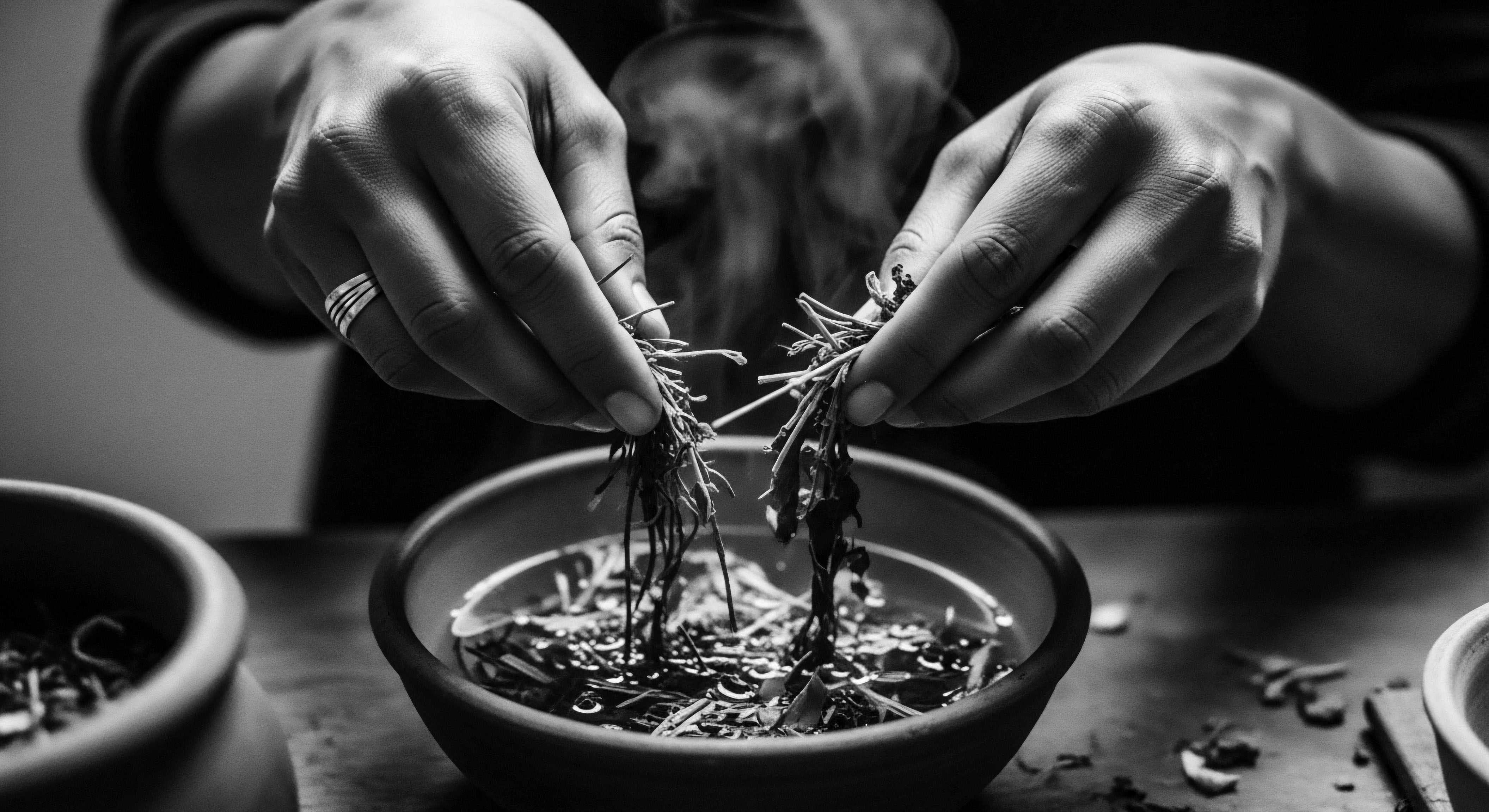
The Interconnectedness of Hair Fiber Health and Identity
The academic exploration of Hair Fiber Health in textured hair extends beyond its material properties to its profound semiotic role. Hair, particularly for Black and mixed-race individuals, has historically served as a potent symbol of identity, status, spirituality, and resistance. In pre-colonial African societies, intricate hairstyles conveyed complex messages about age, marital status, wealth, and communal rank. The removal of hair during enslavement was a deliberate act to strip individuals of these markers, severing their connection to their heritage and identity.
The persistent Eurocentric beauty standards, which historically favored straight hair, contributed to a pathologization of afro-textured hair, influencing self-perception and hair care practices for centuries. This societal pressure often led to the widespread use of chemical relaxers, which, while achieving a desired aesthetic, frequently compromised the Hair Fiber Health by altering the disulfide bonds within the keratin structure, leading to weakened strands and increased breakage. The long-term consequences of such chemical treatments, including potential health risks, have become a significant area of contemporary academic inquiry.
The contemporary natural hair movement, which gained significant momentum in the 2000s, represents a powerful socio-cultural phenomenon that has directly impacted the academic understanding of Hair Fiber Health. This movement, rooted in the “Black is Beautiful” ethos of the 1960s, advocates for the acceptance and celebration of natural afro-textured hair, shifting the focus from alteration to preservation and enhancement of inherent Hair Fiber Health.
The re-emergence of natural hair practices is a powerful testament to the enduring connection between Hair Fiber Health and the reclamation of cultural identity.
This shift has prompted a surge in research into the unique needs of textured hair, validating many traditional practices through a scientific lens. For instance, ethnobotanical studies are increasingly documenting the efficacy of African plant-based ingredients in hair treatment and care, seeking to understand the biochemical mechanisms behind their traditional uses. This academic validation not only enriches our scientific knowledge of Hair Fiber Health but also provides a crucial affirmation of ancestral wisdom, bridging the gap between traditional knowledge systems and modern cosmetology.
The ongoing challenge for researchers and practitioners lies in translating this deepened scientific understanding into accessible, culturally competent care strategies that honor the diverse heritage of textured hair. This requires a nuanced approach that respects the historical context of hair practices, acknowledges the socio-emotional impact of hair on identity, and provides evidence-based solutions that genuinely support the Hair Fiber Health of all textures.
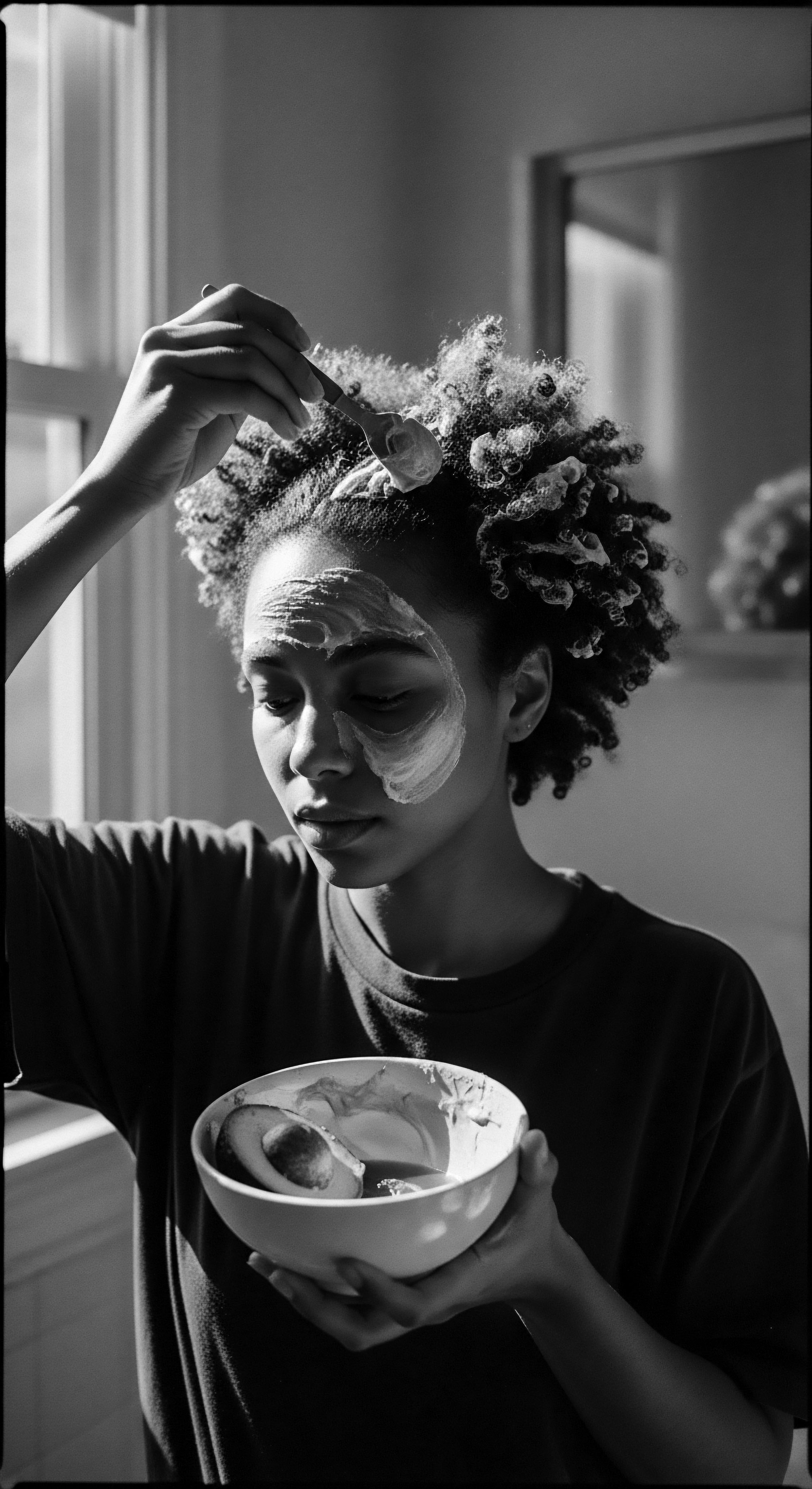
Reflection on the Heritage of Hair Fiber Health
As we conclude this exploration, the enduring significance of Hair Fiber Health within the context of textured hair and its communities becomes luminously clear. It is not merely a biological state, but a living archive, a testament to ancestral resilience, ingenuity, and profound cultural wisdom. The journey of the hair fiber, from its elemental biology to its role in voicing identity and shaping futures, echoes the “Soul of a Strand” ethos—each coil, each curve, carrying the whispers of generations past.
The historical narratives surrounding textured hair reveal a continuous thread of adaptation and affirmation. From the meticulous braiding patterns that once communicated social standing and spiritual connection in ancient African societies, to the acts of defiance embedded in the clandestine braiding of rice seeds during enslavement, hair has consistently been a medium of communication and survival. This deep heritage underscores that caring for Hair Fiber Health is more than a personal grooming ritual; it is an act of honoring lineage, a tangible connection to those who came before.
The contemporary natural hair movement stands as a powerful continuation of this legacy, a vibrant expression of self-acceptance and cultural pride. It is a collective recognition that the inherent qualities of textured hair are not deficiencies to be corrected, but unique attributes to be celebrated and understood. The scientific validation of ancestral practices, such as the nourishing properties of shea butter or the protective benefits of threading, further solidifies the wisdom embedded in these traditions, bridging the perceived divide between ancient knowledge and modern discovery.
Looking forward, the ongoing commitment to Hair Fiber Health for textured hair promises a future where beauty standards are inclusive, where care practices are truly holistic, and where every strand is recognized for its intrinsic value and its profound historical story. This dedication to understanding and nurturing the Hair Fiber Health ensures that the echoes from the source continue to resonate, the tender thread of tradition remains unbroken, and the unbound helix of textured hair continues to rise, free and magnificent, into the future.
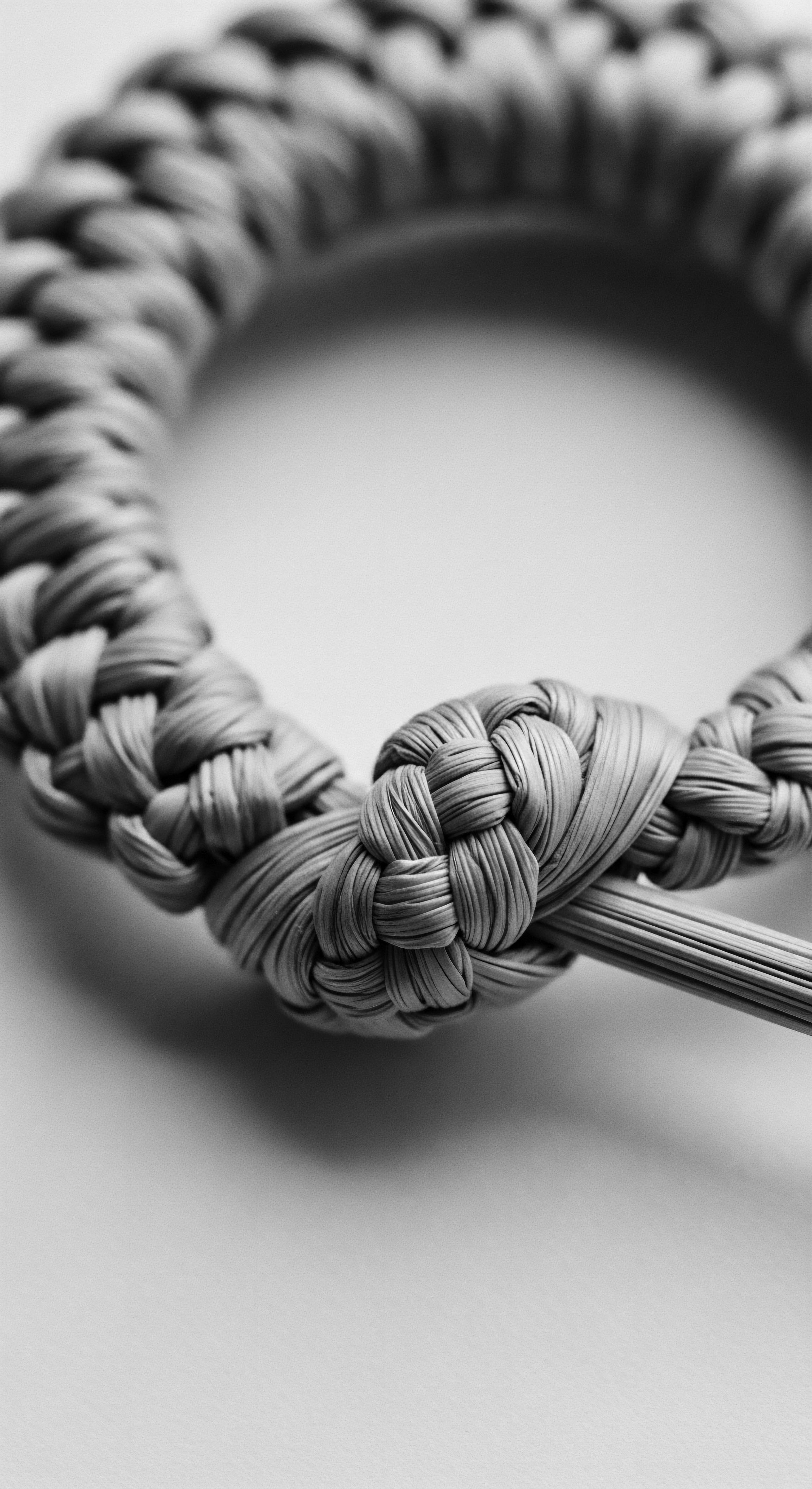
References
- Byrd, A. D. & Tharps, L. D. (2014). Hair Story ❉ Untangling the Roots of Black Hair in America. St. Martin’s Griffin.
- Caffrey, C. (2023). Afro-textured hair. EBSCO Research Starters .
- Essel, M. (2017). The Aesthetics of Hair Grooming in Precolonial Ghana. University of Ghana.
- Essel, M. (2021). Traditional Hairstyles in Ghana ❉ A Cultural and Historical Perspective. University of Ghana.
- Gordon, M. (2000). The History of African Hairstyles. Sage Publications.
- Mander, M. Ntuli, L. Diederichs, N. & Mavundla, K. (2007). Traditional medicine in South Africa ❉ A review of policy and practice. University of KwaZulu-Natal.
- Nayak, S. & Ligade, V. (2021). Traditional Cosmetics and Their Uses. Nova Science Publishers.
- Omotos, A. (2018). The Significance of Hair in Ancient African Civilizations. Journal of Pan African Studies, 11(3), 23-38.
- Rodriguez, A. & Jackson, B. (2023). What Every Dermatologist Must Know About the History of Black Hair. Practical Dermatology, November, 36-39.
- Sieber, R. & Herreman, F. (2000). Hair in African Art and Culture. The Museum for African Art.
- Sobiecki, J. F. (2012). The intersection of culture and science in South African traditional medicine. Indo-Pacific Journal of Phenomenology, 14(1).
- Warra, A. A. (2022). Ethnobotanical Advancements in Contemporary Skincare. IGI Global.
- Yingngam, B. (2024). Ethnobotany ❉ Connecting Humans, Plants, and Their Surroundings. CRC Press.
